For the first time in its 23-year history the AMOS (Advanced Maui Optical and Space Surveillance Technologies) Conference was sold-out in advance of the September 27-30 dates. The premier technical conference in the nation devoted to Space Situational/Domain Awareness (SSA/SDA) hosted 1212 in-person attendees at the Wailea Beach Resort. A further 259 joined in virtually as the Conference continues to provide a hybrid option for those unable to travel to Maui.
The continued growth in attendance at AMOS reflects a growing interest in space sustainability and space commerce initiatives across all sectors—national governments, private sector companies, non-governmental entities, and universities.
“The AMOS Conference is experiencing astronomical growth on all fronts: attendance in-person from around the world, partnerships with our sponsors and exhibitors, and the technical contributions by our authors and presenters,” said Leslie Wilkins, MEDB President and CEO. “This year’s gathering mirrors the growth we have seen in the space economy across the globe. Our international participants, from 23 countries, included our neighbors from the Indo-Pacific region as well as Europe and Central America. Additionally, MEDB continues to support the Air Force’s mission on Maui which, in turn, supports our mission of economic diversification.”
The AMOS Conference program featured daily Keynote speakers, SSA/SDA policy forums, exhibits, short courses and networking receptions. Both in-person and livestream attendees had access to a virtual platform to facilitate networking and collaboration before, during and after the conference.
Keynotes and Policy Forums
The conference opened with Keynote Speaker, Lieutenant General Michael A. Guetlein, Commander, Space Systems Command, headquartered at Los Angeles Air Force Base, California. He spoke on the threats in space from foreign actors. “I always start talking at these conferences about the threat. Not because I want to admire the threat, but because we have to counter the threat to ensure we continue to use space for peace and for defense.”
Later he commented on the positive advances being made, “There’s an enormous amount of excitement going on out there. The threat is not the only thing that has changed over the past 3 years, there’s been a lot of positive change as well.”
He then challenged the audience, “Today I’m asking you all to take credit for what you have accomplished, commit to stop admiring the problem and get after the threat through innovation, utilaterian effort and an absolute sense of emergency.”
Victoria Samson, Washington Office Director for Secure World Foundation (SWF) led the SSA Policy Forum on Day 1, ‘Using SSA to Verify Future Space Security Agreements.’ She noted, “AMOS provides the opportunity for networking and knowledge-sharing within the SSA community. The keynotes and SSA policy forums at AMOS offered collaboration on space security and stability by looking at how SSA can promote space safety among all nations. Space has become an increasingly complicated domain and it is vital to have a cooperative approach for space sustainability in order to benefit all people.”
Samson was joined by panelists, Almudena Azcarate Ortega, Associate Researcher, Space Security and Weapons of Mass Destruction Programs, United Nations Institute for Disarmament Research; Daniel Ceperley, Founder & CEO, LeoLabs; Michael Gleason, Senior Project Engineering, Center for Space Policy and Strategy, The Aerospace Corporation; Douglas Hendrix, CEO, ExoAnalytic Solutions and Benjamin Silverstein, Research Analyst, Carnegie Endowment for International Peace (CEIP.)
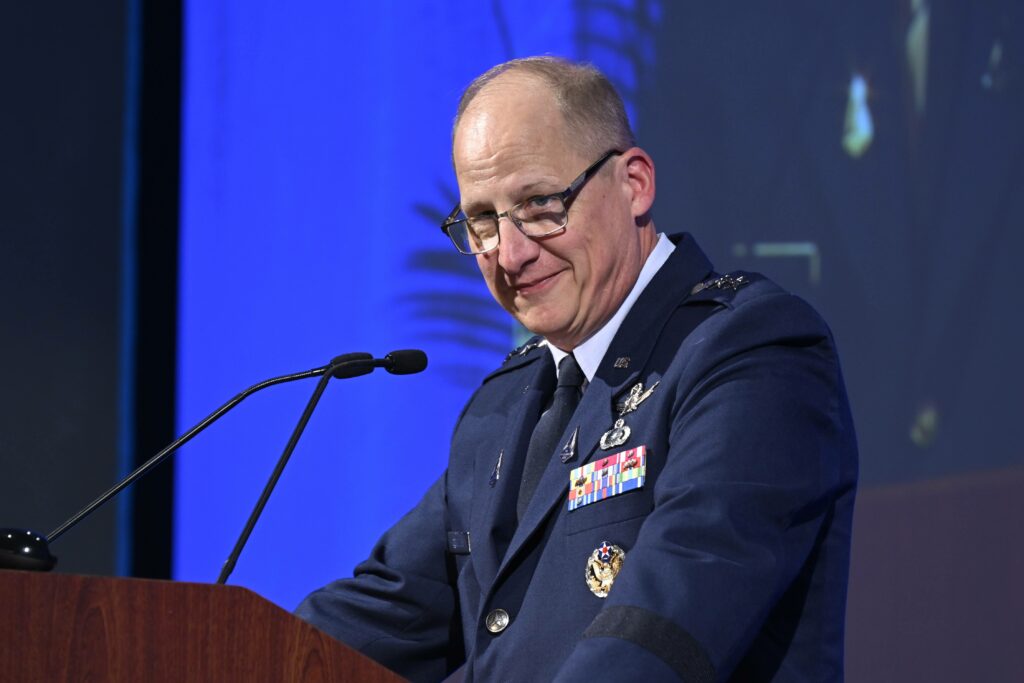
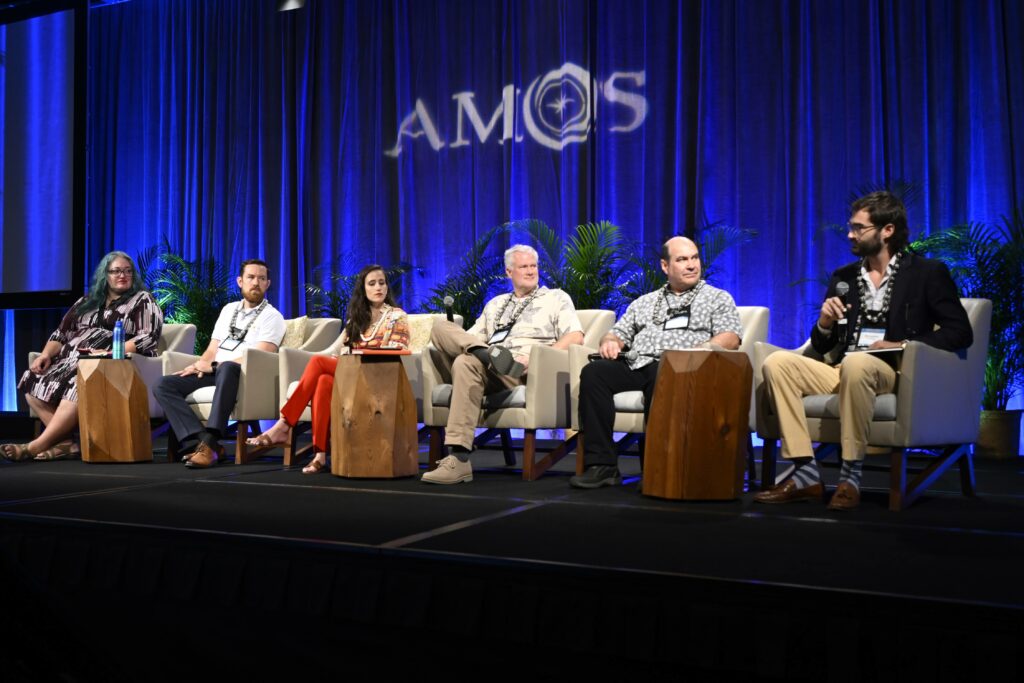
The Keynote address on Day 2 was given by Dr. Ezinne Uzo-Okoro, Assistant Director for Space Policy, White House Office of Science and Technology Policy (OSTP), who focused her remarks on orbital debris. Noting a priority to mitigate, track and remediate debris, Ezinne reported, “Last July we completed our implementation plan that really seeks to guide the U.S. government by providing a cohesive set of actionable steps the nation can take to address the increasing orbital debris problem.”
She pointed out, “There is a lot of opportunity in space and we need to address space debris so that space is sustainable and remains a working environment.”
Ezinne was also the guest speaker for the inaugural evening reception celebrating ‘Women and Allies in Space Domain Awareness.’ “Space is a source of innovation and opportunity for all Americans and our international partners,” she said. “It is thrilling that a women’s group in SDA and Space Sustainability gathered at the AMOS Conference.”
The reception, coordinated with support by Ansys, COMSPOC, Lockheed Martin and Astroscale, aimed to strengthen and empower the community of women and non-gender specific Space Domain Awareness professionals, as well as heighten the understanding of gender disparity within space-related careers. Only one in 5 space professionals identify as female or non-gender specific, and this statistic has only minimally fluctuated in the last 30 years.
Ian Christensen, Director of Private Sector Programs, Secure World Foundation moderated the Day 2 SSA Policy Forum ‘Is Orbital Carrying Capacity a Useful Metric’ with a hybrid panel. Appearing onstage at AMOS will be Richard Linares, Associate Professor of Aeronautics and Astronautics, Massachusetts Institute of Technology; John Janka, Chief Officer, Global Government Affairs & Regulatory, Viasat Inc.; and Akhil Rao, Assistant Professor of Economics, Middlebury College. They were joined virtually by Francesca Letizia, Space Debris Engineer, European Space Agency and Hugh Lewis, Professor, Engineering and Physical Sciences, University of Southampton.
Christenson concluded the discussion asking the panelists to consider what the future might be like five years from now with mature models established– what does that mean for the regulatory system? He asked, “Does the regulatory system have the capacity to use orbital carrying capacity models as a way to improve the management of the orbital domain?”
Richard Linares stated his belief that the system does and pointed out the importance of having people with both technical and policy backgrounds.
John Janka gave an “absolute yes” predicting we will see a number of countries doing it in less than five years. “I think what you are going to see in the coming year is a groundswell of support for the fact that we need to start preparing for the future and creating the opportunity for competition and innovation and making sure there’s room for all the things that no-one in the room is smart enough to think of but is going to be coming down the road in five years.”
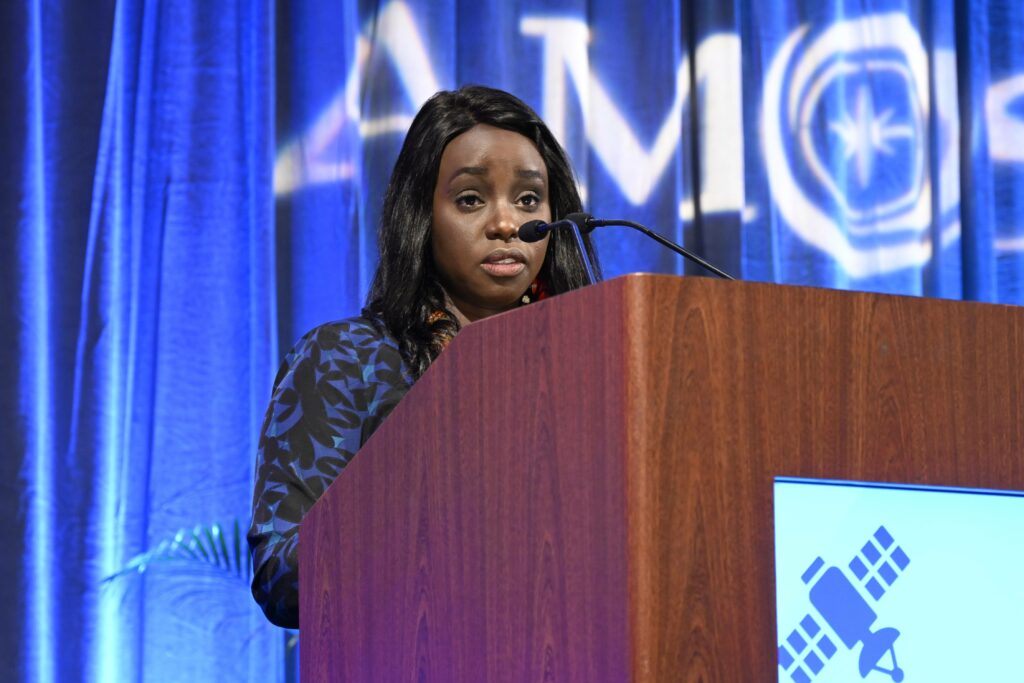

Day 3 kicked off with Richard DalBello, Director, Office of Space Commerce, National Oceanic and Atmospheric Administration, U.S. Department of Commerce. “SSA is now considered important enough that commercial and civil should be separated from space domain awareness and national security space. I always rush to add that the national defense is not going away …. they’re just going deeper on their mission and asking us to pick up the slack on things, one might argue, are not central to their concerns.” This responsibility was transferred to Office of Space Commerce which is within NOAA.
DalBello reported that “the Department of Commerce will be the civil agency that is responsible for the publicly releasable portion of the DoD catalogue and for administering an open-architecture data repository.”
“We’re not trying to burden the industry,” DalBello pointed out, “but on the other hand we are entering a much more complicated environment and we need to have the rules that correspondingly help us make sure it’s safe not only for this generation but also for future generations.”
DalBello’s overview of US-based space traffic management (STM) dove-tailed into the SSA Policy Forum where Brian Weeden moderated a panel discussing “The European Perspective on Space Traffic Management.” The European Union recently announced their strategy on STM, which is billed as a different approach than that from the United States.
Weeden was joined onstage by Pascal Faucher, Chair, European Union Space Surveillance and Tracking, Defense & Security, CNES; and and Regina Peldszus, Space Policy Officer (Space Security, Space Situational Awareness), European External Action Service. Joining the conversation via livestream were
Sebastien Moranta, Research Manager, European Space Policy Institute; and Rodolphe Muñoz, Legal Officer, European Commission, Directorate- General for Defence Industry and Space.
Muñoz summarized at the end, “In order to affect the best STM you need to work together, and I think this is understood. If we work together with regional approaches we can keep some differences, of course because we are not similar, however we can build bridges through standards, through metrics, through exchanges – we know that these regional approaches can be compatible.”
Regina Peldzus added “we think our approach resonates greatly with the U.S. transitioning from DoD to DoC – we see this as a safety mission but using similar capabilities we will also have a security mission that’s separate.”
Read more about insights from Secure World Foundation on the SSA Policy Forum
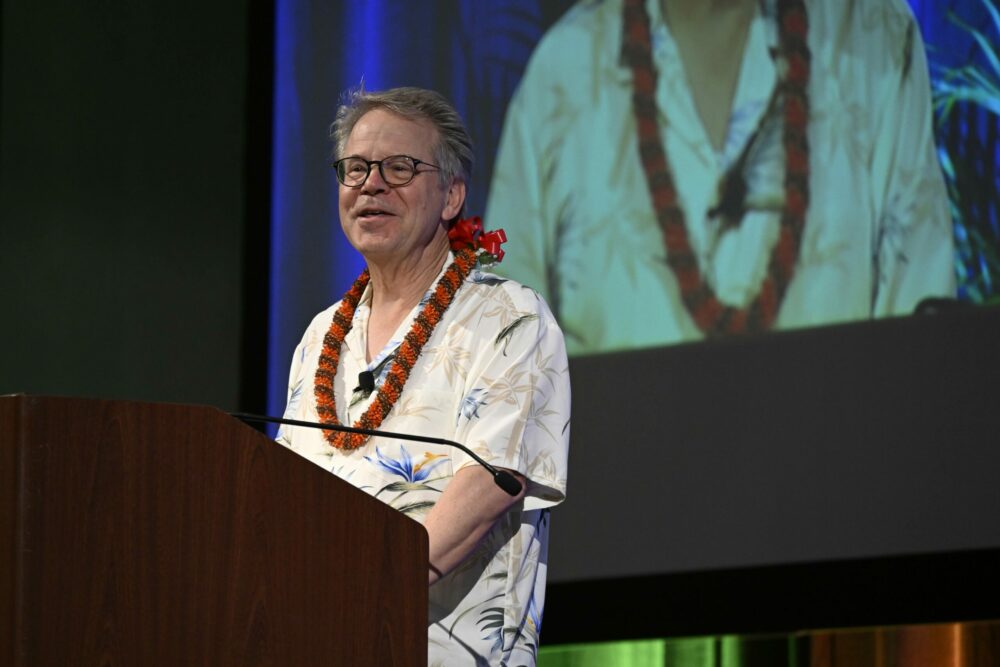
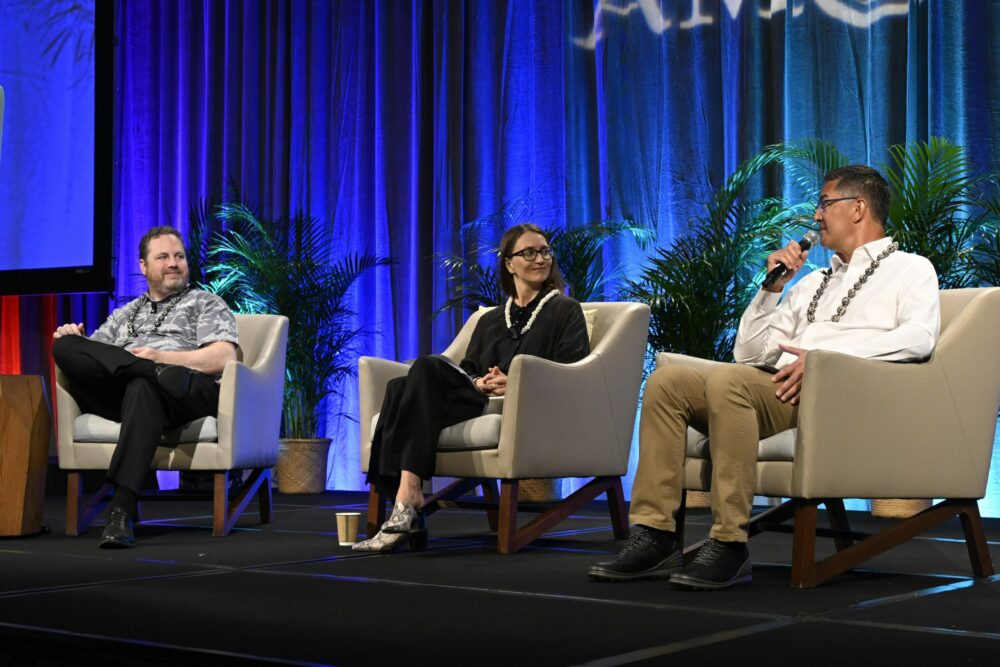
Technical Conference
AMOS Conference received over 260 abstracts from 20 countries, nearly 20% more than last year’s record-breaking submission count and spanned 10 topical sessions: Astrodynamics; Atmospherics/Space Weather; Cislunar SSA; Conjunction/RPO; Machine Learning for SSA Applications; Non-Resolved Object Characterization (NROC); Optical Systems & Instrumentation; Space-Based Assets; Space Debris; and Space Situational/Domain Awareness. 195 papers were selected for oral or poster presentation.
“This is my fourth year at AMOS and the technical content is what keeps bringing me back. Every year the content gets better and it’s fun to see all the new, cool and exciting stuff that people are doing,” said Emily Gerber of Stratagem Group and session chair for the NROC session. She added, “I love the machine learning sessions because there is always something new there and there are so many ways to apply machine learning to SDA and it’s going to explode in the future.”
“Overall the sessions are just solid,” commented Islam Hussein, Trusted Space and session chair for Machine Learning for SSA Applications. “I think people are doing incredible things and all are very relevant. As a session chair, it’s very difficult in the review process as the papers are all good and choosing which get a podium and which does not isn’t an easy job. The quality I would say has been very consistent. There are a few exceptions, but they are rare.”
Last week I had the fantastic opportunity to attend the AMOS Conference after having an abstract accepted for our research titled “Modeling and Testing of COTS Observation Systems for Night and Daytime Satellite Detection,” enthused Ellen Glad. “Being a part of this conference and learning from others in the industry was just an absolute dream. Thank you to my mentors at Millennium Space Systems, A Boeing Company for your encouragement throughout this research and to all the lovely people who I had the chance to meet in Maui!”
The SSA/SDA technical session included a new format this year, with co-chairs Danielle Wood, Space Enabled Research, MIT Media Lab and Moriba Jah, Privateer Space and University of Texas at Austin, hosting a panel shaped by the submissions received in their track. This pilot effort resulted in a well-received and engaging discussion on SSA/SDA Technology Policy, with four papers focused on international capabilities, including U.S.-China relations, recent trends in US national security space acquisition, and the global implications and risks of uncontrolled rocket re-entries.
AWARDS
Presented papers are peer- reviewed for publication in the 2022 Journal of Astronautical Sciences, and on the last day of the conference the American Astronautical Society (AAS) recognized outstanding efforts by presenting awards.
Best Paper for 2022 AMOS Conference was awarded to Julia Briden, Massachusetts Institute of Technology, for her paper “Impact of Space Weather on Space Assets and Satellite Launches.”
Michael Klonowski, University of Colorado at Boulder was awarded the Best Student Paper Award for “Optimal Cislunar Architecture Design Using Monte Carlo Tree Search Methods.”
“Very humbled,” expressed Klonowski when asked about receiving the Best Student Paper Award. “This is my first conference paper ever and first conference and I guess I stumbled on a good topic. I was very excited to write the paper. My advisor and everyone in my lab talks about AMOS as a pinnacle of industry conferences, not just for technical papers but for meeting all the peers and being able to present in front of them. So far, it’s lived up to that and beyond that.”
Best Presentation awards were given for each of the technical sessions with winners being: Astrodynamics – Prashant Patel, Institute for Defense Analyses; Atmospherics/Space Weather – Julia Briden, Massachusetts Institute of Technology; Cislunar SSA – Michael Thompson, Advanced Space; Conjunction/RPO – Tom Kelecy, The Stratagem Group; Machine Learning for SSA Applications – Imene Goumiri, Lawrence Livermore National Laboratory; Non-Resolved Object Characterization – Conor Benson, University of Colorado Boulder; Optical Systems & Instrumentation – Julian Gamboa, Northwestern University; Space Debris – DeShaun Hutchinson, 18th Space Defense Squadron; Space-Based Assets – Roberta Ewart, SSC/ST; Space Situational/Domain Awareness – Simon Anger, DLR
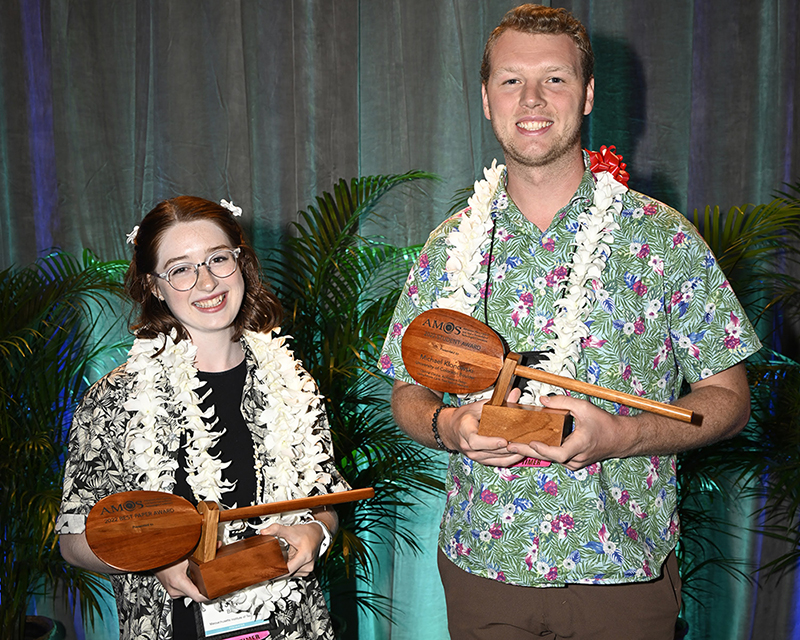
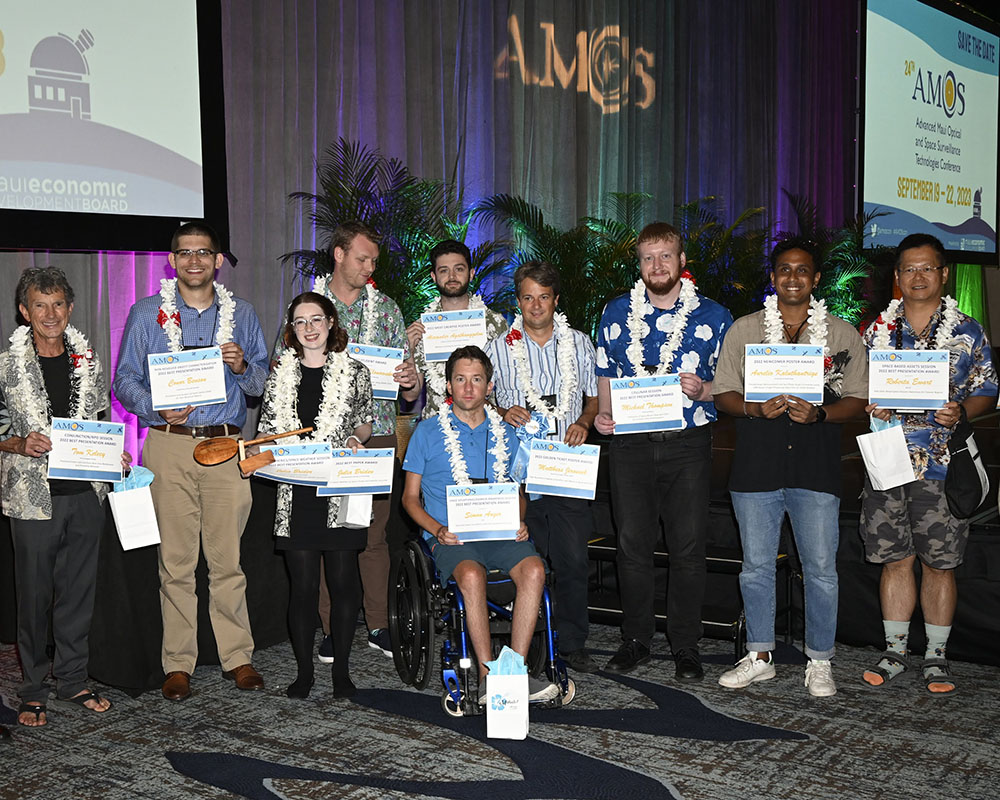
TECHNICAL POSTERS
Attendees had access to the largest pool of technical posters yet, with 124 posters presented in digital format with accompanying briefings. 64 of these posters were invited for in-person presentation during the evening Poster Sessions. With the addition of virtual only posters, the number of poster presentations at AMOS doubled this year. This largest body of scientific work and cutting-edge research yet allowed for abundant technical exchange by a greater number of in-person and online attendees.
To bring further recognition to poster presenters, a new platform was introduced, led by Poster Session Chairs Darren McKnight and Matthew Stevenson, both of LeoLabs. Each of the presenters were assigned a time to give a 30-second pitch to encourage listeners to come view and hear more about their posters.
“What’s great about the AMOS Conference is it really tries hard to represent all parts, all industries, all domains,” said McKnight, a Senior Technical Fellow. “What we did this year is instead of poster session being a quiet side event, we had the conch shell announcement, we had lightening rounds so that people get motivated and excited to see the work. Some of the best work I see at conferences are the poster papers and often times they are neglected. They weren’t neglected this year. We gave out a number of awards and we got a lot more attendance and hopefully this is something we continue in the future.”
For the first time there were three awards presented for Poster presentations. The Golden Ticket (Best poster) was won by Matthias Jirousek, German Aerospace Center (DLR) for “High Resolution Imaging of Satellites and Objects in Space with IoSiS”. Most Creative poster was presented to Alexander Agathanggelou, Defence Science and Technology Laboratory for “Machine Learning for Satellite Characterisation: and the Newcomer award was won by Aurelio Kaluthantrige, University of Strathclyde for his poster “Pseudorange Measurement and Sun Phase Angle Estimation using CNN-based Image Processing Algorithm for HERA Mission.”
Invited Talks, Exhibition and Networking
The 2022 AMOS program included Invited Talks with Colonel Marc A. Brock, Commander, Space Delta 2, US Space Force who spoke on cis-lunar space domain awareness capabilities. On Thursday, Diane Howard, Director of Commercial Space Policy, National Space Council shared that the council would be introducing “learning sessions” with industry on how to develop a new regulatory framework for novel commercial space activities.
Colonel Jeremy A. Raley, Director, Space Vehicles Directorate, Air Force Research Laboratory and David A. Ehrlich, Principal Deputy, Innovation & Prototyping Acquisition Delta, Space Systems Command presented together on the topic “Challenging Space: Strategic S&T from LEO to Cislunar.”
The rich program was complemented by numerous networking opportunities – one of the main attractions for AMOS – with breakfast and lunch included and nightly networking receptions.
“My goal this week was to really network and meet different people in different industries as I’m graduating this spring and looking for future employment opportunities,” said Harry Krantz, a grad student at University of Arizona Steward Observatory, who also participated in the preceding EMER-GEN Program. “My goal was to find out what is going on in the industry, what options there might be in the future.”
“It’s very good to be back at AMOS in-person,” said AMOS regular, Uwe Wirt of DLR (German SSA Center). “I enjoyed the virtual AMOS last year but it’s not the same because besides the program of the conference, the networking here is very important — especially for me as a representative from an international country.”
SSA Policy Forum panelist, Akhil Rao commented, “I’m talking to people I wouldn’t have thought I would be talking to. I really thought this was going to be super technical conference, that there would be a lot of sessions and be kind of awkward and talk about technical things but there are a lot of diversity in what there is being talked about.”
The poster and exhibit venue was a hive of activity with exhibiting sponsors demonstrating their products and services. Exhibiting sponsors were: Advanced Scientific Concepts; The Aerospace Corporation; AFRL; Astro Haven Enterprises; AWS Aerospace and Satellite; Ball Aerospace; Blue Canyon Technologies; CACI; Celestron; COMSPOC; General Atomics; GEOST; Hawaii National Air Guard; JHU Applied Physics Laboratory; Kayhan Space; Kratos; LeoLabs; Lipoa – Maui Innovation Community; Lockheed Martin; Northstar Earth & Space; Planewave Instruments; Privateer Space; Rocket Communications; SAIC; Sierra Nevada Corp; Slingshot Aerospace; SpaceMap; The Boeing Company; and TOPTICA Photonics.
Sponsoring, but not exhibiting, were Cloudstone Innovations; Japan Space Forum; KBR; ExoAnalytic Solutions; L3Harris; Linquest; LSAS Tec; Northrop Grumman; Peraton; Raytheon; Secure World Foundation; Space Foundation; SpaceNav; and Terran Orbital.
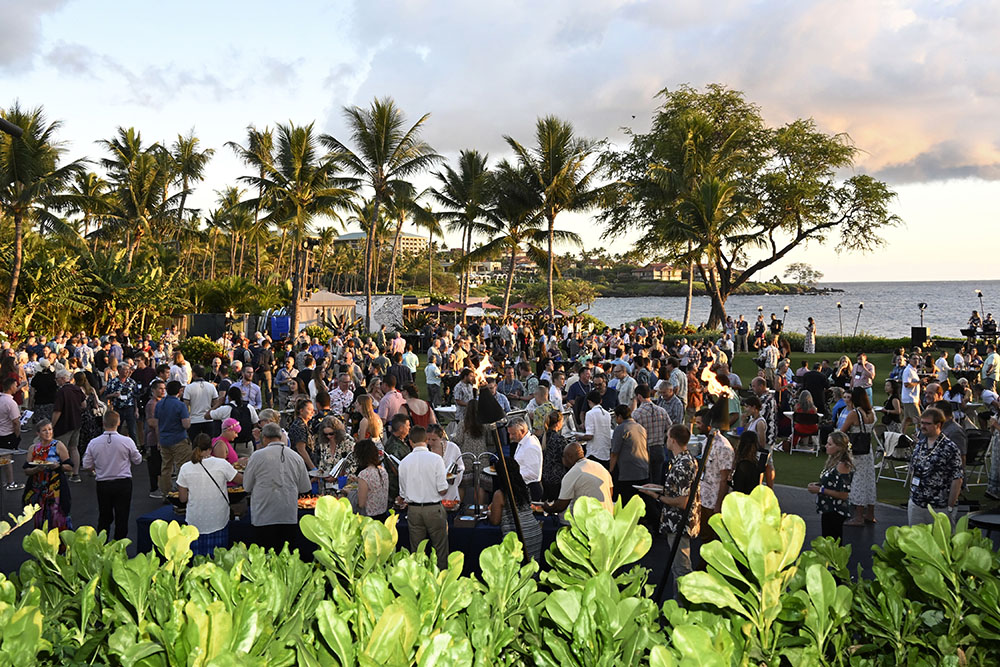
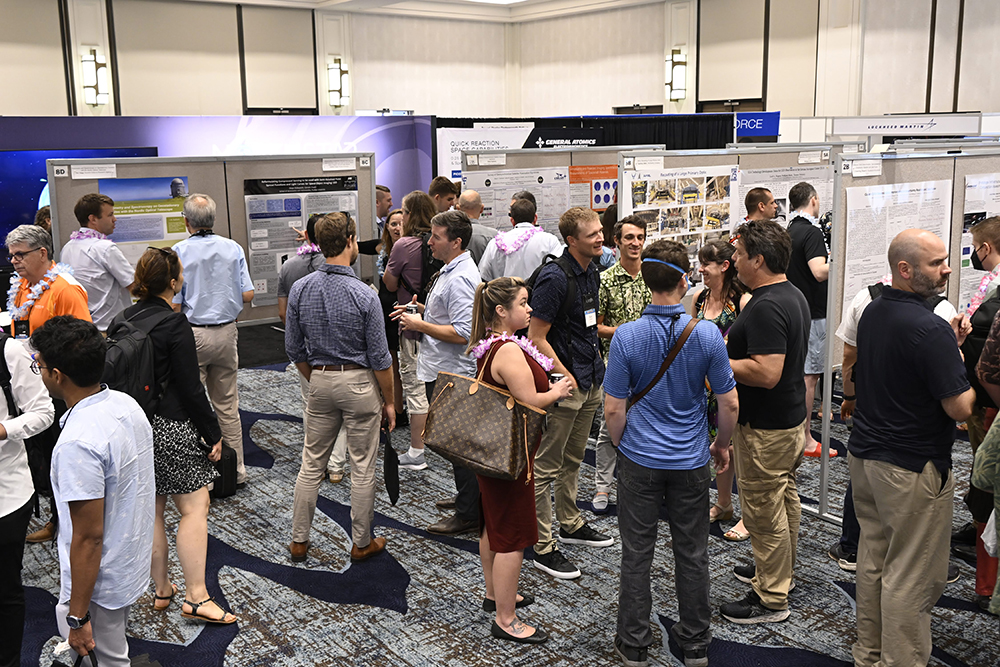
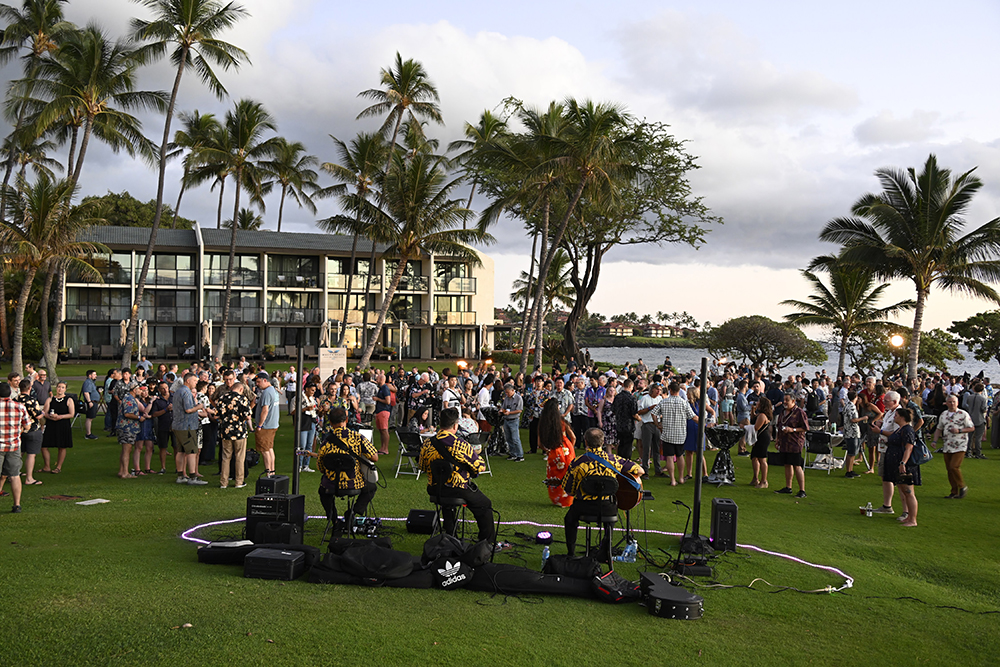
Technical Short Courses
Attendees had the option to select and participate in sixteen short courses in a variety of topics related to SSA/SDA. Presented by highly regarded industry experts and specialists in SSA, the courses provided opportunities for working professionals to upgrade their technical job skills and remain abreast of recent developments.
Ten short courses held in-person on Tuesday, Sept 27 were: Conjunction Assessment (CA) Risk Assessment; The Dynamic Co-Evolution of Space Policy and Technology: Historical Overview and Lessons for Assessing Future Trends; Deep Learning Methods for Space Domain Awareness; Optical Modeling and Simulation for SSA/SDA; Navigating the Sea of Space Law; Demystifying Machine and Deep Learning; Observing and Characterizing Space Debris; An Introduction to Event-Based Sensors for SDA: A Hands-On Tutorial; Space Law & The Space Law Games: Legal Liability and Mapping the Future in LEO Operations; and Astrodynamics for xGEO Space Domain Awareness.
Six short courses held virtually on Monday, Sept 26 were: Space Domain Awareness (SDA) Workshop; Space Weather Impacts on Orbital Operations; Telescopes and Optics for Ground-Based Optical SSA; LeoLabs Cloud-based SDA Platform; The International Framework for Space Behavior: Present Foundations and Future Prospects; and In-orbit data processing – Writing SpaceCloud Applications.
Read more about the short courses offered in 2022
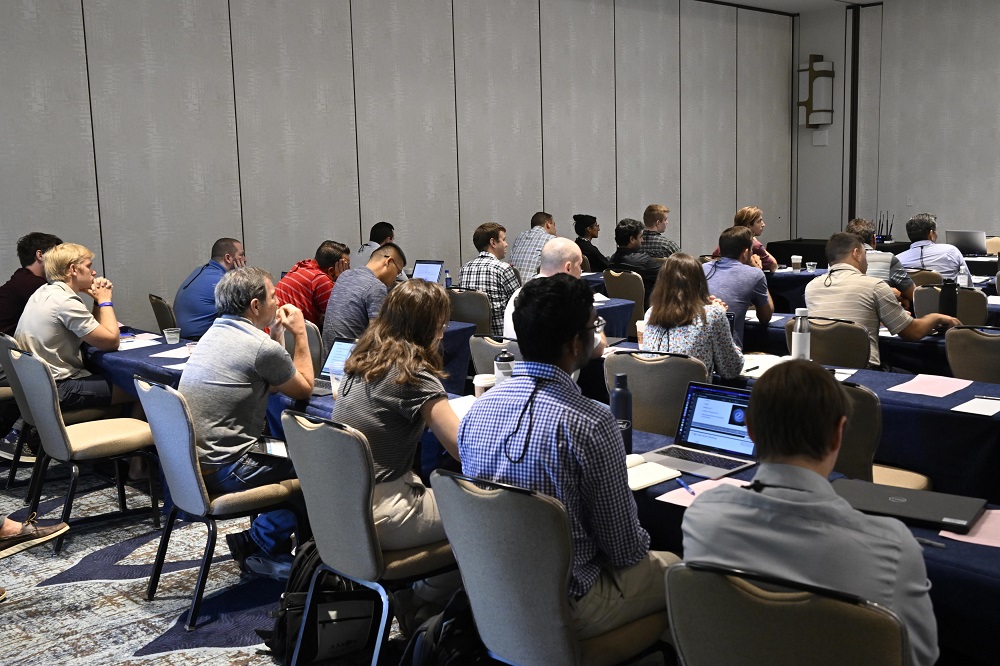
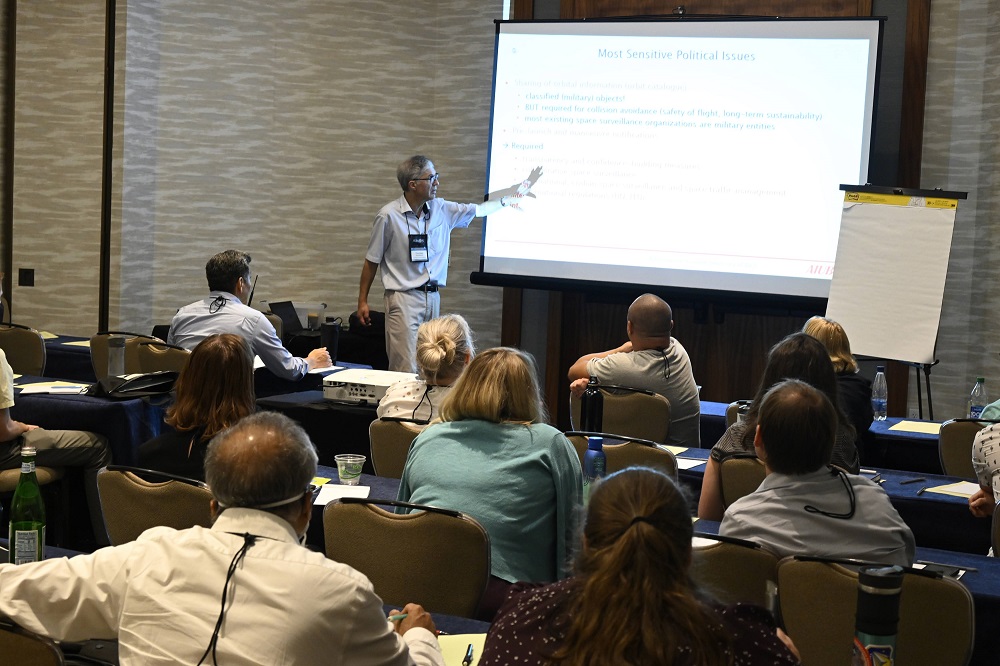
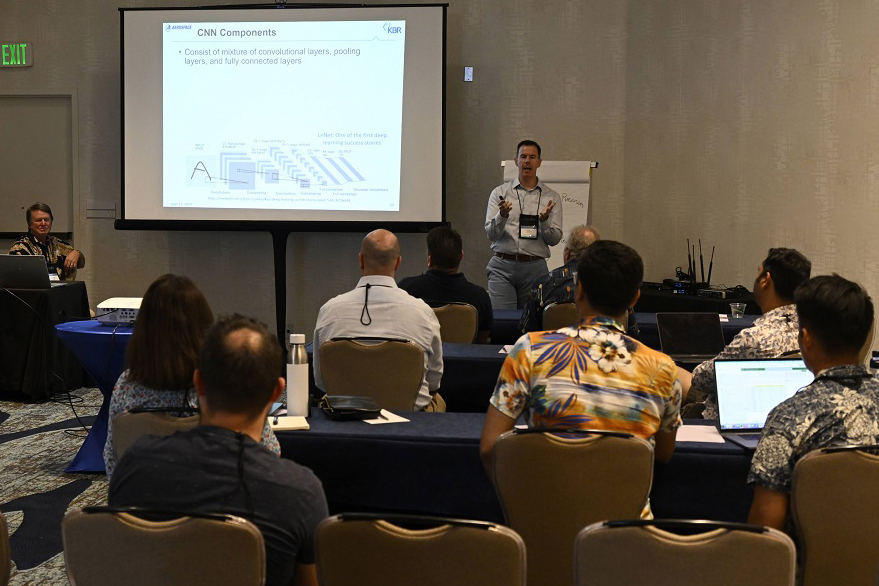

EMER-GEN® Program
The AMOS Conference was preceded by the 5th EMER-GEN® program for young professionals enthusiastic about careers in space. A joint initiative of the AMOS Conference and SGAC, the program featured mentoring sessions with renowned space specialists, along with professional development sessions designed to enhance the young professionals’ effectiveness in a global environment. The program culminated in pitch presentations by teams working on the hackathon challenge of developing a new product or service for the lunar economy.
The main two-day EMER-GEN program featured sessions in Celestial Navigation, Space Traffic Management (STM), Space Situational Awareness (SSA) and Space Domain Awareness (SDA), Mentoring, Consensus Building, and the Hackathon. Working in teams, participants were challenged to find innovative ways to apply space-based technologies to advance the future of the space industry. Discussions ranged over a wide variety of topics, from effective multi-cultural communication and leadership qualities to international cooperation for long-term safety and sustainability in space.
Michael Barton, a.i. solutions, pointed out, “This is my 5th year at EMER-GEN! For me, it is a great way to connect with the future of the industry and meet the experts in the field. It is a challenging goal to have organizers, mentors, presenters, and a cohort from such diverse backgrounds to provide such interesting content. Over the years, mentors have helped me navigate my career and what I should be working on. The level of education provided at EMER-GEN and AMOS is high, thanks to MEDB.”
Ellen Glad, Millennium Space Systems, exclaimed, “EMER-GEN is such a great experience! I knew it would be good, but it is even better. Everyone here is so passionate about what they do. I feel empowered and supported from EMER-GEN and AMOS. The MEDB team are fantastic female leaders, especially in a male dominated industry.”
Ashten Akemoto, University of Hawaii, noted, “My takeaway is how the mentorship and networking at this conference introduced me to so many professionals from such diverse fields. It truly helped broaden my horizon of the space industry. I am so thankful to MEDB for this opportunity.”
Read full story on EMER-GEN 2022
Student Exploration Day
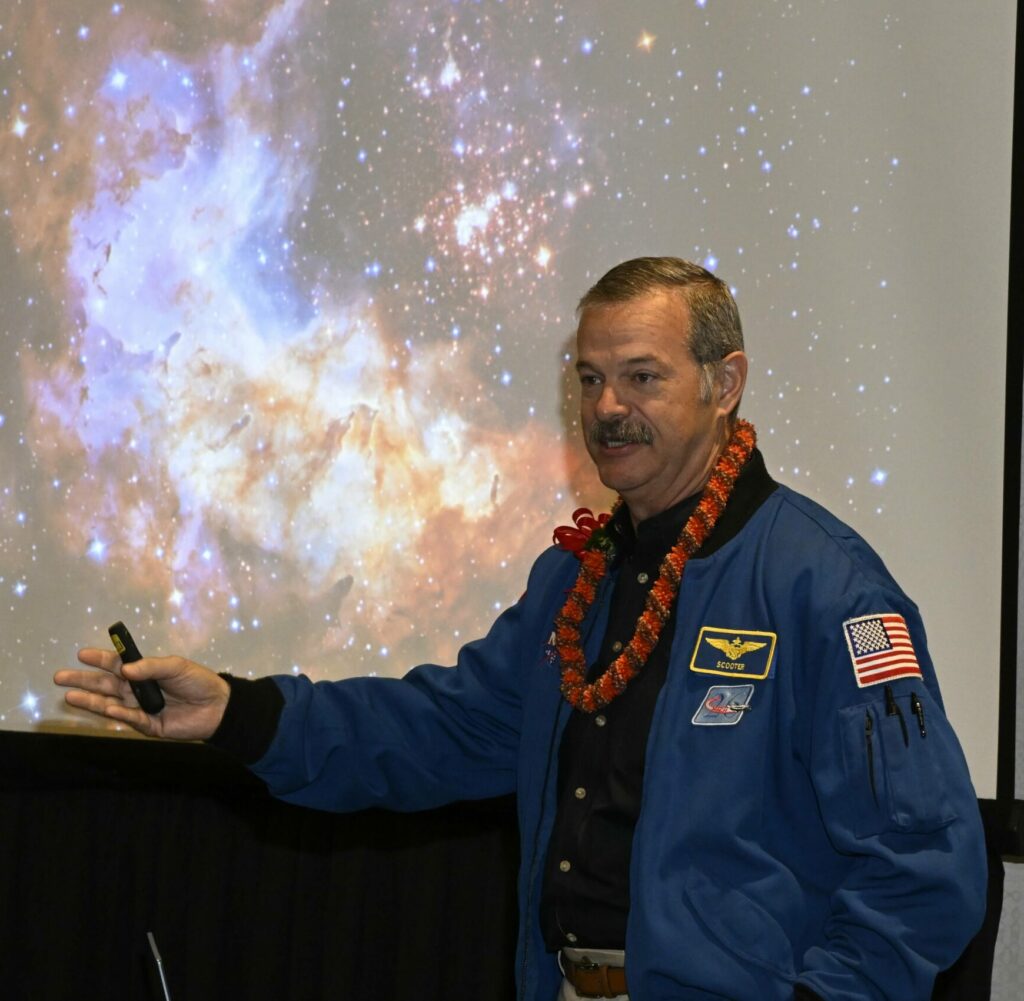
On the Friday, 150 middle school students came to the conference venue for Student Space Exploration Day where they were treated to a presentation by astronaut Scott “Scooter” Altman followed by hands-on, space-related activities with select AMOS exhibitors and local organizations.
Altman, a retired United States Navy Captain and naval aviator, engineer, test pilot and former NASA astronaut, is a veteran of four Space Shuttle missions. He is also known for his aerial acrobatics in the 1986 Top Gun movie with Tom Cruise.
“It is an honor to be here at AMOS,” Altman said. “I like to engage with students because it’s important that we connect with the next generation and get them interested in space-related issues. The students in this age group are our future. Maybe someone here today will be the first one on Mars.”
Summary
“What makes the AMOS Conference so special?” summed up Emily Gerber. “It’s the people here. This has, in my opinion, the highest caliber of technical people and you’re able to go read all their papers and understand what is going on and they really are doing the highest level of work.”
Darren McKnight added, “It really is a great atmosphere for some really important scientific work. Space situational awareness has never been more important and the number of people here are reflective of the activity in space. The highest number of people ever attending AMOS and highest number of operational satellites and debris ever in space.”
The AMOS Conference and EMER-GEN are presented by the Maui Economic Development Board, Inc. (MEDB), a nonprofit corporation established in 1982 to focus on diversifying Maui’s economy. MEDB’s mission involves taking innovative actions that strengthen existing industry as well as diversifying through new opportunities. Save the date for 2023 – September 19-22 with EMER-GEN Program on September 17-19.
